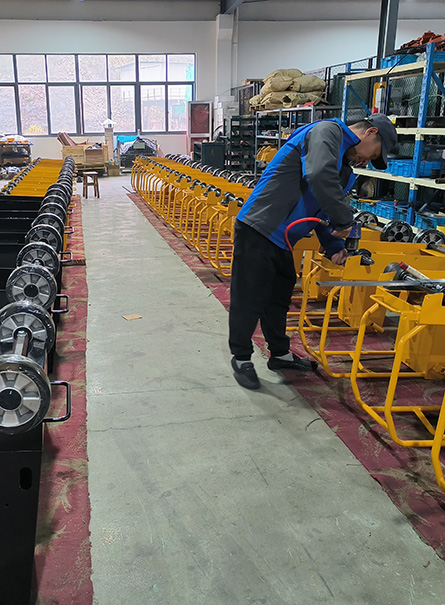The Role of Compactors in Construction
Compactors are essential in construction, working to compress soil, reduce air pockets, and prepare the ground to support heavy loads evenly. This helps avoid issues like foundation settling or cracking down the line.
Choosing Between Plate and Vibratory Roller
When it's time to purchase a compactor, the decision between a plate compactor and a roller compactor hinges on several factors, including your industry, workspace size, and the materials you're dealing with.
These have a base plate that vibrates to level the ground, making them ideal for sandy and gravelly terrains with coarse particles. The vibration helps particles settle into a stable formation. Plate compactors have a wider surface area and are great for confined spaces. Single-direction plates are useful for tasks like maintaining asphalt or curb edgings.
Best for cohesive soils like silt or clay, roller compactors are often used on asphalt for foundations of pavements, driveways, and parking lots. Suited for larger areas, their key advantage is speed, allowing for quicker completion of extensive work areas. This makes them particularly valuable in road construction projects.
Understanding Rollers in Construction
A roller is a large, ride-on machine primarily used in road construction for compacting various layers of materials. Although primarily associated with road building, rollers can also be used for compacting trash and in landscaping for parks and fields. They are defined by their size and design, being large enough to ride on rather than handheld.
Rollers are the go-to equipment for compacting substantial areas of ground. They are typically chosen unless the construction site is too small or inaccessible for them. Here’s a look at the different types of rollers available :
Different Types of Rollers:
- Smooth Drum Rollers: As the name suggests, these have smooth, circular drums ideal for compacting granular materials.
- Padfoot Rollers: These have flat, wide spikes, perfect for compacting soil and clay by expelling air.
- Single and Tandem Drum Rollers: Single drum rollers have one drum at the front and wheels at the back, while tandem drum rollers feature two drums, one at each end.
- 4-Wheel Padfoot Rollers: Used mainly for landfill compaction, they have smaller, wheel-sized rollers instead of tires, enabling them to climb and compact trash piles.
- Pneumatic-Tyred Rollers: Also known as rubber tire rollers, they are used for finishing and sealing, capable of smoothing out uneven surfaces.
What Is a Compactor?
A compactor, more commonly known as a plate compacting machine, is a smaller, pedestrian-operated machine used for compacting smaller areas like driveways and walkways. They are ideal for tight spaces where a large roller can't operate.
Often overlooked in road construction, compactors are actually quite versatile. They come in handy for resurfacing or upgrading roads, particularly in hard-to-reach or smaller areas where a standard roller isn’t suitable or necessary.
Different Types of Compactors:
- Rammer: Ideal for small, tight access areas, rammers are high-powered and an excellent alternative to rollers for compact spaces.
- Vibrating Plate Compactors: Best suited for larger walk-behind areas, like driveways and footpaths, these provide effective compaction for a range of materials.
Both rollers and compactors are essential in construction, each serving specific purposes and suitable for different types of projects.
In conclusion, whether you opt for a plate compactor or a roller compactor depends on your specific project requirements and the environment you're working in. Each type has its unique benefits and is tailored to different conditions and materials.


